Is Cutting Overgrown City Lawns Worth It? What Lawn Pros Had to Say
If you're looking for ways to add revenue streams to your lawn care business, cutting overgrown city lawns may have crossed your mind. We asked lawn-care professionals how city/municipal “overgrown yard” jobs really play out. The short answer: it can be a decent add-on stream in some markets, but only if you price for abuse on your equipment, confirm payment terms, and choose your jobs wisely.
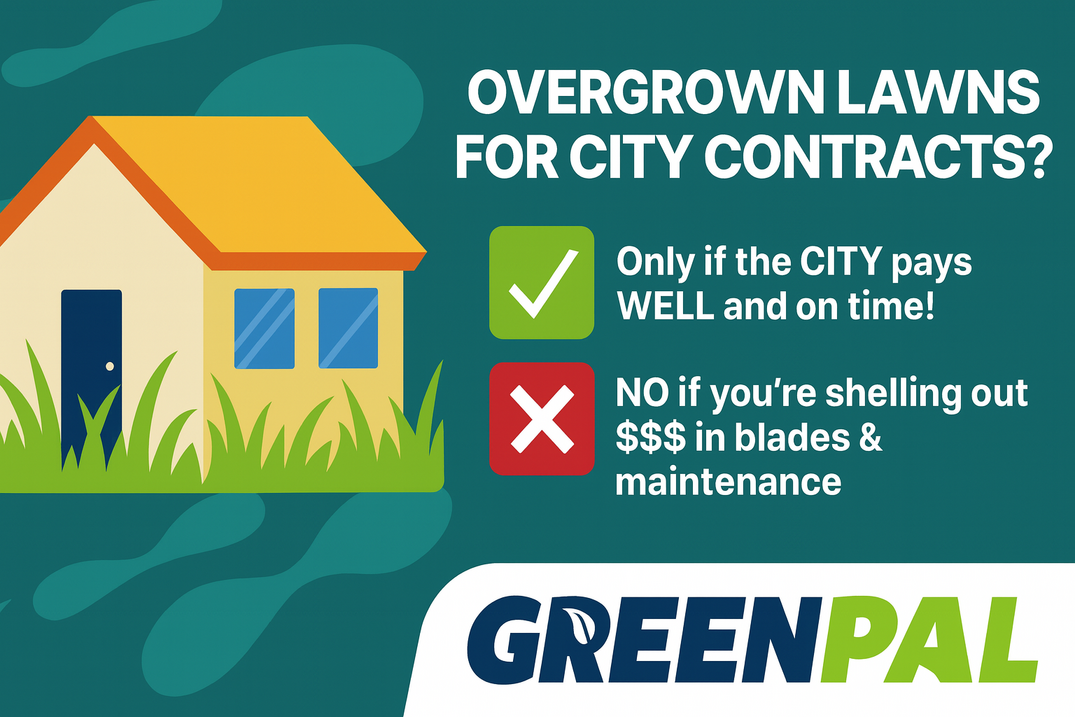
How these jobs usually work
Most towns handle overgrown or abandoned lots through code compliance/code enforcement. Depending on the city or county, they’ll (1) send their own crews, (2) keep a short list of approved vendors, or (3) award work ad hoc after a complaint or citation. Sign-ups are typically through the building and zoning or code compliance department, but every locality is different.
Several pros said, “It varies by city.” Some places pay the contractor and then fine the owner; others expect a low flat rate; a few pay quickly and fairly; others are slow.
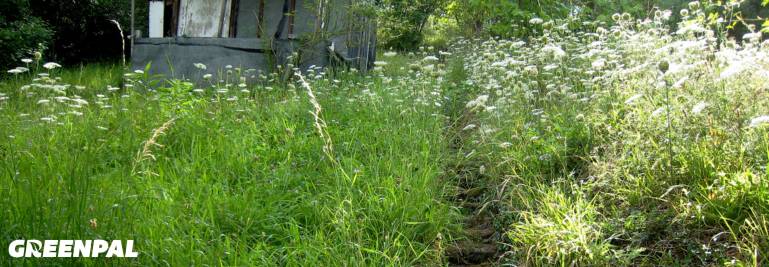
The upside (why some pros do it)
The reason most pros take on these projects is for extra money. If there is downtime in the schedule and the money is there, they can afford to pass up.
Consistent need: Overgrown yards never go away. When your regular schedule dips, these can fill the gaps.
Sometimes solid pay: Pros reported a range from low-ball offers around $30 to $100 for small cuts, up to $175–$400 per yard in better markets. One before-and-after example in your screenshots showed a large cleanup that paid $1,200 (clearly an outlier, but it does happen).
Skill building: Walking these properties teaches you how to estimate dense growth, debris, and blade wear—useful when quoting future cleanups.
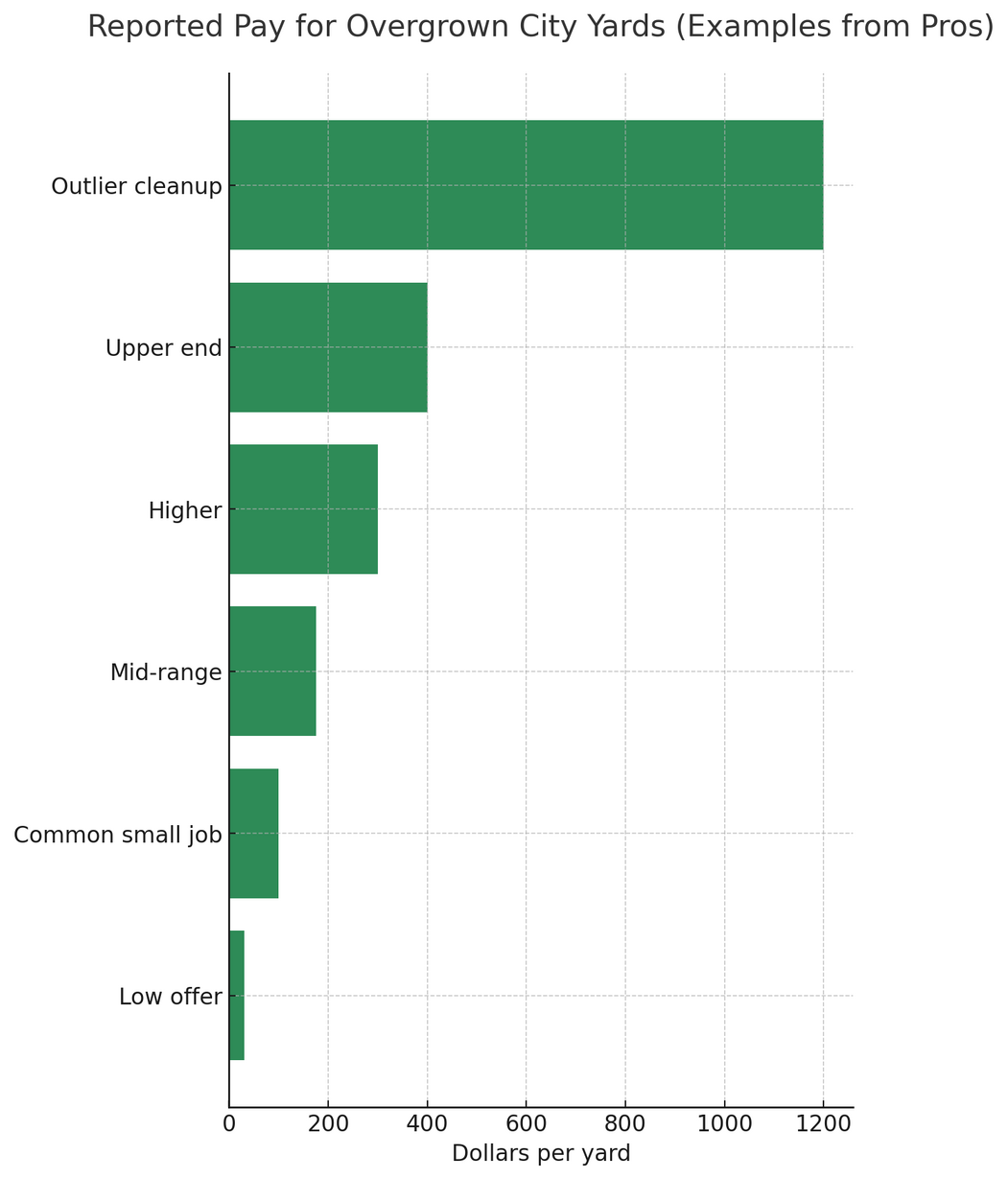
The downside (why many avoid it)
If cutting overgrown city lawns was the perfect gig, every landscaping company would be fighting for them. Like anything else, there is always a downside, and you must be aware of it going into this. Here are a few to keep in mind:
Hidden debris destroys gear. Multiple pros complained about “all types of stuff” in tall grass that kills blades, spindles, and bearings.
Heavy maintenance load. Expect to scrape and sharpen daily on runs like this, and some crews keep spare mowers just to ensure uptime.
Payment headaches. A common theme: slow payouts or unclear processes. You might be told “the city pays later and fines the owner,” but that can take months.
Low or flat rates. Some municipalities pay the same amount, whether it’s for a postage stamp or an acre—a non-starter for many.
Safety and site risks. Abandoned properties can come with tense encounters or unsafe conditions.
Opportunity cost. Many pros prefer private customers: better pay, fewer surprises, faster cash flow.
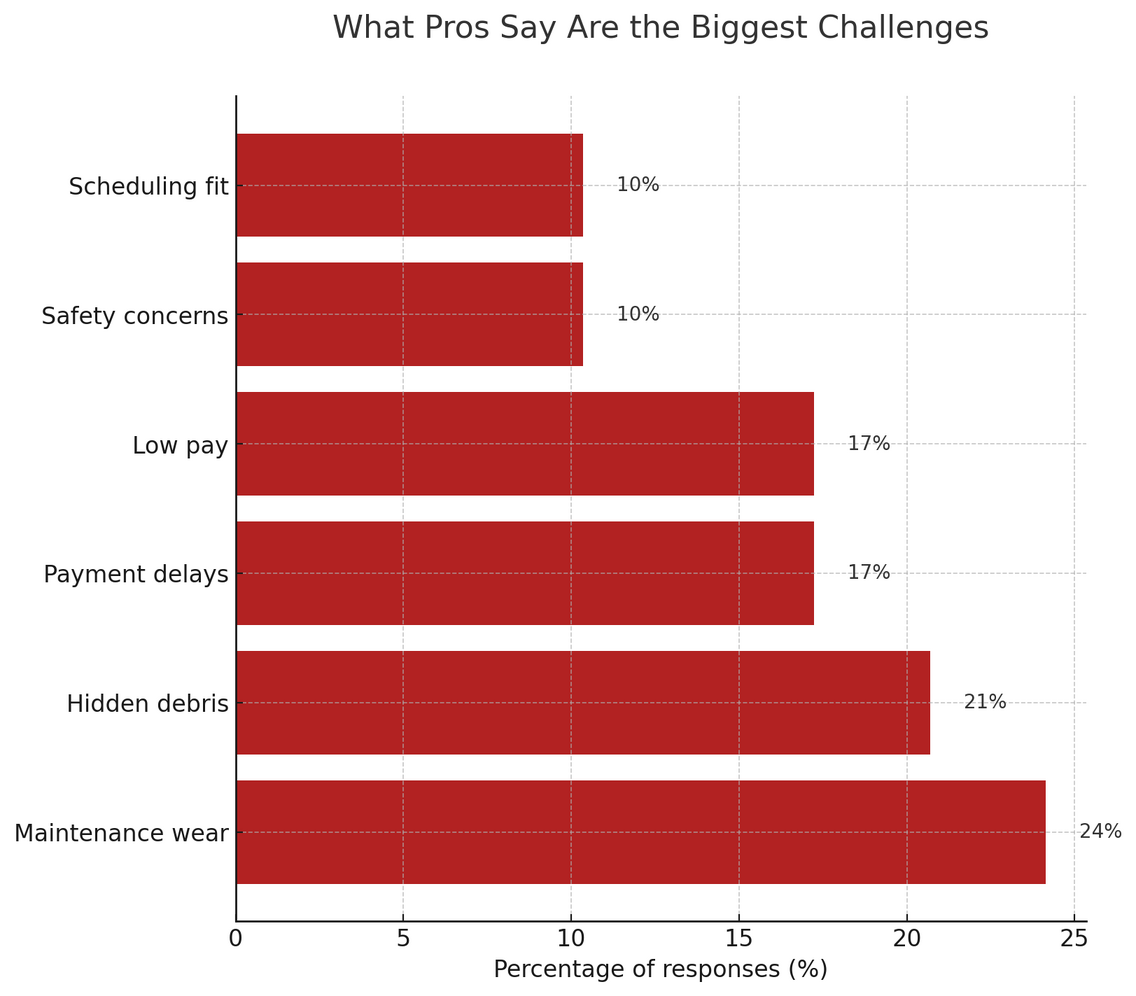
What the pros recommend (before you say yes)
Before you jump into a city overgrown lawn contract, it’s important to go in with a plan. The pros we heard from stressed preparation, pricing, and protecting your regular business as the keys to making these jobs worth your time.
Walk the property first. Don’t quote blind. A quick walkthrough helps you spot hidden hazards like trash, metal, rocks, or stumps that can ruin your equipment. It also lets you size up how much time and fuel the job will really take.
Price for wear & tear. Overgrown city lawns are harder on mowers than a weekly maintenance cut. Add a line item for blade sharpening, belt wear, and spindle risk so you’re not paying out of pocket for extra maintenance.
Clarify payment (who pays, how much, and when). Not every city pays on the same schedule, and some only issue checks after billing the property owner. Make sure you know if you’ll be paid per yard, per acre, or by the hour, and whether debris removal is included in the rate.
Set a minimum by height/acreage. Tall, dense grass takes significantly more time and fuel than a standard cut. Don’t fall into the trap of treating it as “just another mow”—set a baseline price that reflects the actual workload.
Protect your schedule. A surprise cleanup can easily throw off your regular route. If you accept these jobs, ensure they won’t conflict with or displace reliable, paying maintenance clients from your calendar.
Know when to pass. Not every job is worth it. If a city offers $30 for waist-high grass plus haul-away, you’re better off walking away than losing money after factoring in equipment wear and labor.
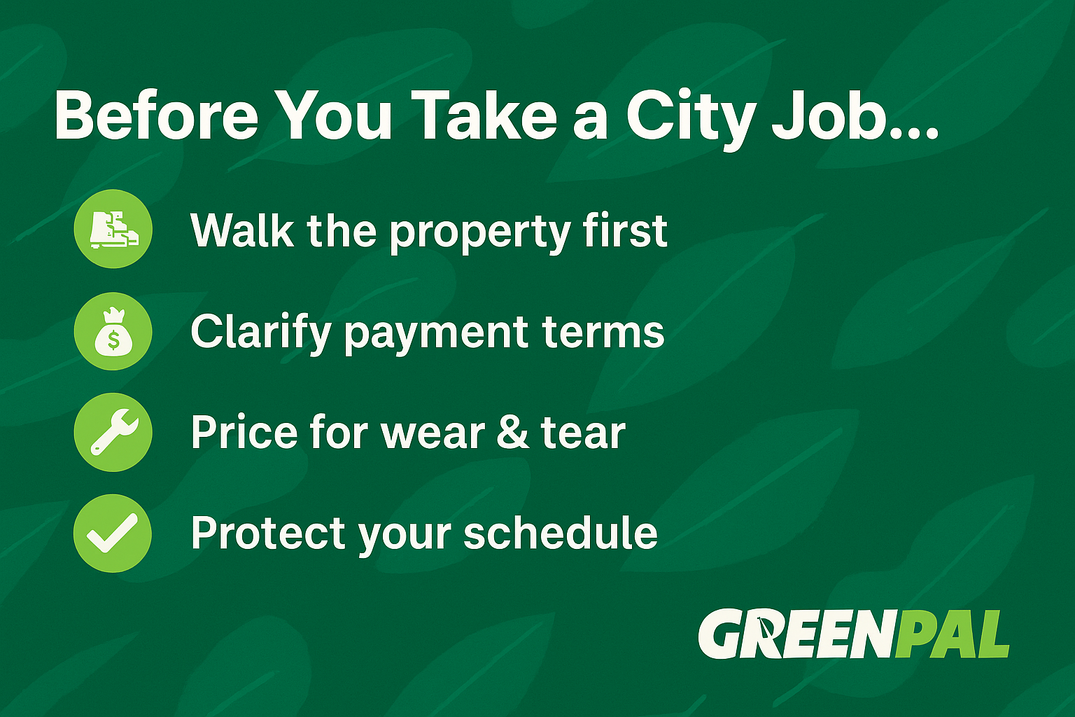
When it can make sense
Not every city job is a waste of time. In the right conditions, these cuts can help you fill gaps in your schedule and bring in extra revenue.
✅ Clear scope and fair rate. Cities that publish rates, pay within a set window, and spell out expectations are worth considering.
✅ You run a cleanup crew. With spare blades, daily maintenance, and experience in heavy cleanups, you’re better equipped to handle the workload.
✅ You treat it as filler work. Use these jobs to smooth slow weeks, not as your main income stream.
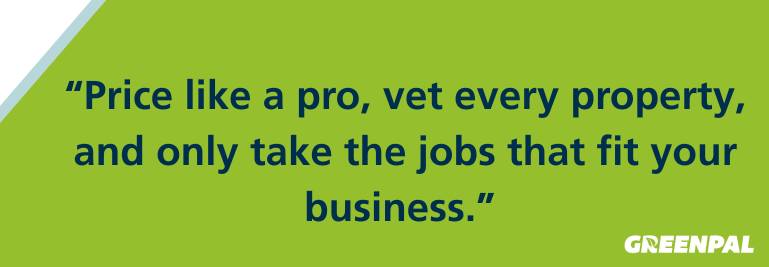
When to skip
Plenty of pros said these jobs aren’t worth the time or equipment damage. If you spot these warning signs, walk away.
❌ Flat rates that ignore size/height. Same pay for a small yard and a waist-high acre is a losing deal.
❌ Unknown payment timeline. If checks take 60–120 days, you’re basically financing the city.
❌ No inspection allowed. If you can’t walk it first, you can’t price it safely.
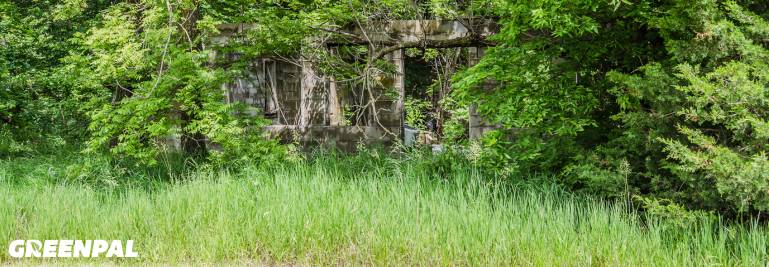
Bottom line + CTA
Cutting overgrown city lawns can be profitable in the right circumstances, but it’s not for everyone. For many pros, it ends up being an equipment grinder with slow pay rather than steady income. The smart move is to price jobs correctly, vet each property before committing, and know when to walk away.
If you’d rather focus on profitable, predictable work with faster payouts, GreenPal can help. Thousands of lawn-care pros already use GreenPal to connect directly with homeowners and businesses who need reliable service no city red tape, no long waits for checks. Apply today to become a GreenPal vendor and start booking the kind of jobs that grow your business.



















